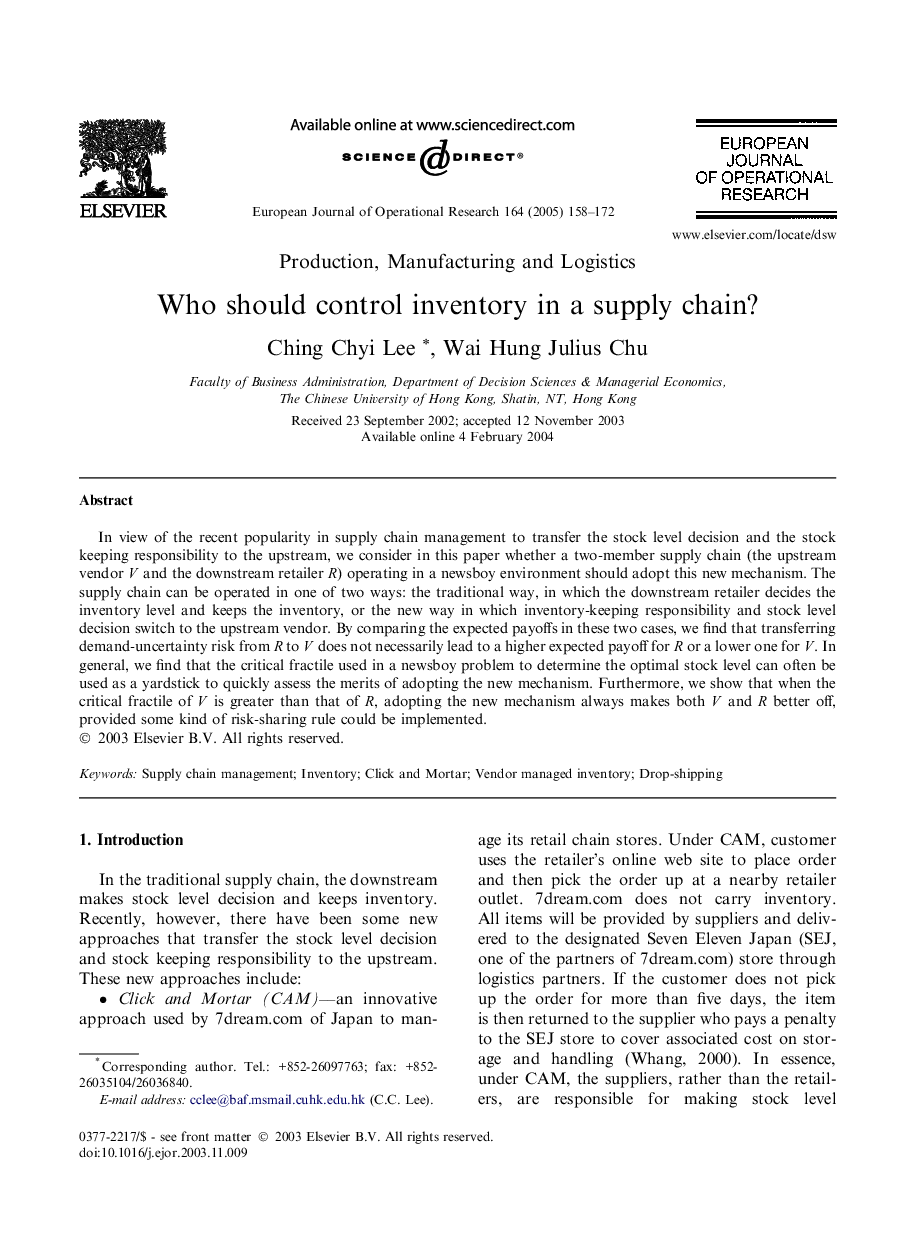| Article ID | Journal | Published Year | Pages | File Type |
|---|---|---|---|---|
| 9663843 | European Journal of Operational Research | 2005 | 15 Pages |
Abstract
In view of the recent popularity in supply chain management to transfer the stock level decision and the stock keeping responsibility to the upstream, we consider in this paper whether a two-member supply chain (the upstream vendor V and the downstream retailer R) operating in a newsboy environment should adopt this new mechanism. The supply chain can be operated in one of two ways: the traditional way, in which the downstream retailer decides the inventory level and keeps the inventory, or the new way in which inventory-keeping responsibility and stock level decision switch to the upstream vendor. By comparing the expected payoffs in these two cases, we find that transferring demand-uncertainty risk from R to V does not necessarily lead to a higher expected payoff for R or a lower one for V. In general, we find that the critical fractile used in a newsboy problem to determine the optimal stock level can often be used as a yardstick to quickly assess the merits of adopting the new mechanism. Furthermore, we show that when the critical fractile of V is greater than that of R, adopting the new mechanism always makes both V and R better off, provided some kind of risk-sharing rule could be implemented.
Related Topics
Physical Sciences and Engineering
Computer Science
Computer Science (General)
Authors
Ching Chyi Lee, Wai Hung Julius Chu,
